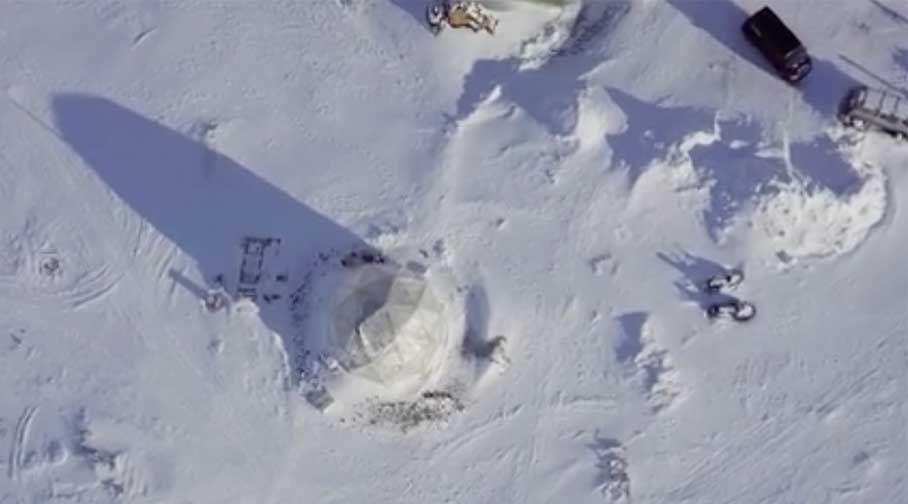Imagine the challenges of gardening in the Arctic. Long, cold winters. Short, cool summers. Almost three months of darkness. It’s a harsh reality where all food has to be imported. But an innovative new system is changing arctic gardening as we know it, making the ideas of local, fresh, and sustainable possible.
Ready to be inspired?
Polar Permaculture Solutions is the only source of fresh food in the world’s northernmost city of Longyearbyen, Svalbard island. The company has designed and built a geodesic dome greenhouse, microgreen lab, and sustainable composting system.
It doesn’t look like anything special. In this short feature by NBC News, you’ll see how unimpressive the dome actually is. But what’s happening inside is almost magic. Organic microgreens, vegetables, and sprouts are grown for the community, and quail eggs are distributed for a fair price.
Warmth emanates from a sauna in the middle of the small dome, and in the lab, microgreens sprout under a few grow lights. Food is hand-delivered to local hotels, restaurants, grocery stores, and private residences. My, how things have changed.
Sustainability in the Arctic
Just a few years ago, Polar Permaculture says that truly fresh food was a luxury only for those who could afford it. All food had to be flown in, lacking in nutrition and accumulating many miles along the way. Waste was either exported to Sweden where it was burned, or dumped into the sea.
To handle waste management, Polar Permaculture now has 10,000 composting red worms in both the dome and the lab, breaking down material to fertilize the next round of crops. Soon, the small start-up company will begin using a bio-digester to recycle the manure from the flock of 120 quails. Doing that alone will eliminate the process of dumping local food waste into the sea.
It’s both amazing and inspiring what modern technology can do. More than that, I’m blown away by the vision of Polar Permaculture’s founder, Benjamin L. Vidmar. An eco-chef and self-professed foodie, he took it upon himself to fix a broken food system. The world needs more people like him.
He says if he can do it in the Arctic, food security is possible anywhere.

Natural Arctic Plant Life
There are about 1,700 plant species in the Arctic ranging from flowering plants and dwarf shrubs to herbs, grasses, mosses, and lichens. They’re all very low growing with a very shallow root system. The growing environment is incredibly unique in the Arctic; first of all, it’s not very long. There’s a substantial amount of soil and partially decomposed organic material that remains frozen year-round. As a result, only a thin layer of soil thaws and refreezes every year, leaving only enough room for a tiny root system.
Challenging Conditions
In the Arctic, a shortage of bees has a cousin of the common housefly taking over pollination duties. A study has found members of the Muscidae family have a significant impact on the seed production of northern plants.
The study was for a doctoral dissertation investigating the structure and functioning of plants and their pollinators in the Arctic and was conducted by Mikko Tiusanen, MSc.
According to his research, the blooming season in the Arctic begins just a few short weeks after the snow melts. Competition for pollination services among the plants is incredibly stiff; there are far more flowers than there are insects. A plant’s survival and ability to produce seeds depends on whether it has been chosen for pollination.
For example, the more colorful blooms in the mountain avens do fairly well and are able to welcome many pollinators. The less attractive flowers are becoming rarer because insects simply don’t visit them.
Timing Is Everything
The study also found that peak flowering times don’t seem to be lining up with peak pollinator population times, and climate change is likely to blame. Tiusanen says both the plants and the pollinating insects seem to be reacting differently to warming temperatures, coming out in greater numbers at different times during the growing season.
The study is only scratching the surface of the kinds of challenges plant life is facing in the Arctic. It also points to the need for solutions such as Polar Permaculture. Since the beginning of time, nature has given us so much. Now it’s time we give it the help it needs.